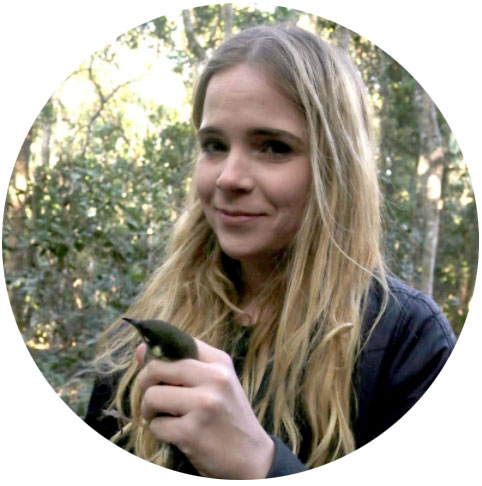Higher Degree Research Students
 Wayne Arnold - Doctor of Philosophy
Wayne Arnold - Doctor of Philosophy
Thesis topic: Camouflaging in Autism Spectrum Disorder
Thesis supervisor(s): Professor Vicki Bitsika, Professor Christopher Sharpley
Why you have chosen this topic: Camouflaging describes a pattern of behaviour where a person with an Autism Spectrum Disorder (ASD) may attempt to mask their autistic symptoms or compensate for difficulties with social interaction (such as by imitating others’ social behaviour) when they are present in social situations. Preliminary research suggests this is done on a regular basis by those with an ASD who are high-functioning, by females more than males, and may be done to due to a variety reasons, such as a desire to fit in with others or to avoid experiences of bullying. Due to a need to constantly self-monitor one’s own social behaviour, camouflaging may result in increased stress, social anxiety, depression, and may reinforce internalised stigma. I chose this topic because I wanted to research something that is relevant to the daily lives and social experiences of those with an ASD, and that which may also provide further insights into the under-diagnosis of females with an ASD and the stigmatisation of ASD and related mental health conditions.
 Lucy Farrow - Doctor of Philosophy
Lucy Farrow - Doctor of Philosophy
Thesis topic: Behaviour, ecology and neuroanatomy of the Noisy Miner (Manorina melanocephala).
Thesis supervisor(s): Associate Professor Paul McDonald and Dr Adam Hamlin
Why you have chosen this topic: The Noisy Miner (Manorina melanocephala) is, quite rightfully, one of Australia’s most hated birds. They are noisy, despotic and frankly psychotic – spending much of their time excluding the little guys from your garden. While many conservation strategies currently implemented aim to improve the success of avian species through culling Noisy Miners, I am interested in understanding the positive side of the species. How is a bird that weighs less than 70g capable of adapting to the rapid anthropomorphic changes we are inducing? I hope that my project will help us establish what it is about the brain of birds that makes or breaks their success as a species, and how these characteristics could improve our understanding of ecological interactions.
 Amelia Lockhart - Doctor of Philosophy
Amelia Lockhart - Doctor of Philosophy
Thesis topic: Mu Variation and Socialisation in Autism Spectrum Disorder
Thesis supervisor(s): Professor Vicki Bitsika, Professor Christopher Sharpley, Professor Phillip Fourie
Why you have chosen this topic: Mu refers to phasic electrophysiological signals identified at eight-13Hz by the the C3, Cz, C4 electrodes. Located above the sensorimotor region of the brain, Mu has been found to desynchronise in response to the observation, imagination, and execution of movement in humans. Mu also shares regional and functional similarities to the Mirror Neuron System (MNS), which is considered dysfunctional in persons with Autism Spectrum Disorder (ASD) resulting in poorer socialisation. I chose to investigate the efficacy of Mu dysfunction in ASD persons because claims of ASD Mu/MNS dysfunction may be premature given that no research to date has included exposure to an actual social situation. Gauging Mu variation to an actual social situation may result more targeted neuro-feedback training for ASD persons to improve socialisation outcomes.
 Julia Page - Master of Science (Neuroscience)
Julia Page - Master of Science (Neuroscience)
Thesis topic: A Predictive Coding Account of Individual Adaptation to Organisational Change
Thesis supervisor(s): Dr Adam Hamlin and Dr Graham Jamieson
Why you have chosen this topic: During my career as an Organisational Change Specialist I have observed that humans resist workplace change in the first instance regardless of age, culture or background. However, there is always a small cohort of individuals who quickly adapt to and embrace workplace change and thrive in the new environment. At the other end of the continuum, I have observed a larger cohort of individuals who are not comfortable with the concept of workplace change, that they exhibit signs of stress, anxiety, depression, decreased productivity and increased workplace accidents. I chose this topic because I was curious about the psychophysiological mechanisms that influence employees’ ability to adapt to workplace change. It is my view that the pace of workplace change is only going to increase. Therefore, it is my goal to apply the knowledge I gain through my research to develop brain based change programs that support employees through the change process with minimal psychological and physiological impacts on them and with increased productivity and safety results for employers.

Hebaat Onapa - Doctor of Philosophy - Innovation
Thesis topic: The Physical and Mental Health Effects of Housing Homeless People
Thesis supervisor(s): Professor Christopher Sharpley, Professor Vicki Bitsika, Professor Linda Agnew, Dr Mary McMillan and Maree McKenzie
Why you have chosen this topic: Having worked with some of the world's most vulnerable and marginalised people, I believe this topic chose me as much as I chose it. It is estimated that 150 million people worldwide are homeless, and approximately 1.8 billion lack adequate housing. Since 2011, there has been a significant increase in the number of people experiencing homelessness in Australia. On Census night in 2016, 116,427 persons were homeless, with NSW accounting for more than 73% of the national increase from 2011, and 60% of Australia's homeless population living in regional and rural communities. Housing is a significant determinant of health and is widely accepted as a key solution to address some of the health disparities that exist among the homeless. Anxiety and depression are two of the most common mental health issues among homeless people, and significant contributors to the overall global burden of disease. This research is informed by the use of biomarker data as an objective tool for assessing anxiety and depression and aims to understand how housing impacts the physical and mental health of the homeless.
 Rukshan Ahamed Mohamed Rafeek - Doctor of Philosophy
Rukshan Ahamed Mohamed Rafeek - Doctor of Philosophy
Thesis topic: Investigation into disease specific proteins that cause post streptococcal autoimmune complications
Thesis supervisor(s): Professor Natkunam Ketheesan, Dr Adam Hamlin and Dr Nicholas Andronicos
Why you have chosen this topic: Post-streptococcal autoimmune sequela triggered by group A streptococcal (GAS) infection including Acute Rheumatic Fever and Rheumatic Heart Disease (ARF/RHD) affects around 16 million people globally, and accounts for 400,000 deaths. The incidence of ARF/RHD in Australia’s Indigenous population is amongst the highest reported globally. More than 30% of ARF/RHD patients exhibit neurobehavioral complications, which are collectively referred to as Sydenham’s Chorea (SC) and Pediatric autoimmune neuropsychiatric disorders associated with streptococcal infections (PANDAS), the presence of SC is considered as an important criterion for the diagnosis of ARF/RHD. Lack of an animal model for SC and PANDAS has hampered advancement in this area. The aim of this study is to develop an animal with cardiac and neuronal pathology similar to SC/PANDAS patients.
 Ali Sadr - Master of Science (Neuroscience)
Ali Sadr - Master of Science (Neuroscience)
Thesis topic: The neuroscience of moral judgment: An ERP study of the affective and cognitive processes during moral decision making
Thesis supervisor(s): Dr Adam Hamlin, Dr Graham Jamieson and Dr Natasha Loi
Why you have chosen this topic: I have been always fascinated by the fact that people have very different opinions when it comes to a moral situation; and sometimes, very strong opinions. I had the chance to study moral traditions during my BA in philosophy, and later learn about human psychology and brain function during my studies in psychological science. With such a background, and to develop my understanding on how we make moral decisions, I decided to choose “the neuroscience of moral judgment” as my research topic with the hope that I could acquire deeper insight into the human brain and the way it works and functions when we face a moral situation.


